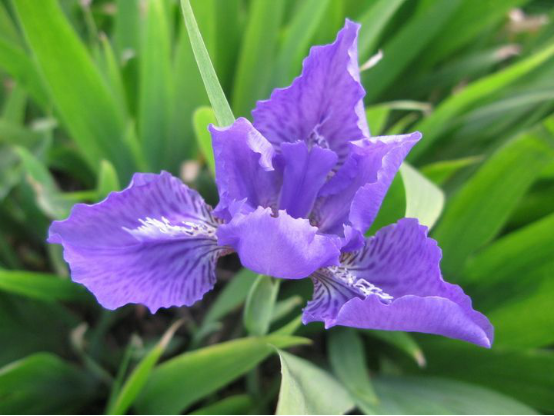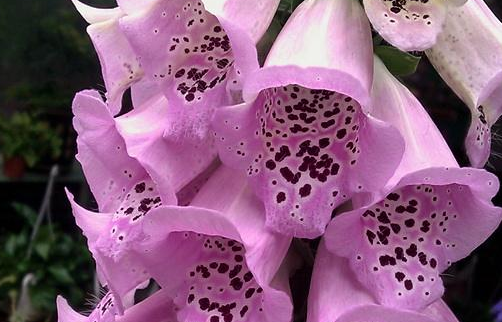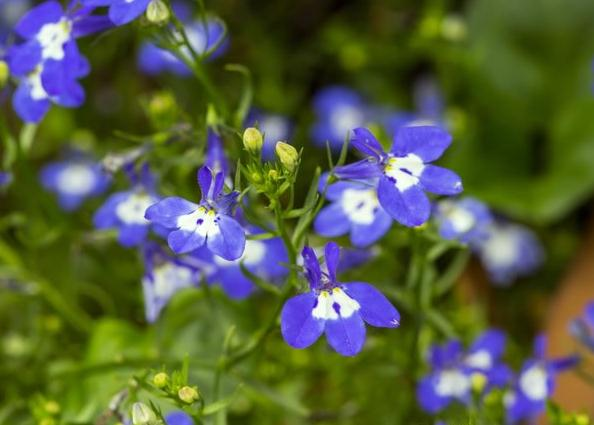Planting method of blue butterfly flower
1. Temperature
The blue butterfly likes hot and hot weather, at which it grows more vigorously, and its most suitable growth temperature is about 23-32 ℃. In winter, the plants need to be cultured in a warm and sunny place.
2. Lighting
When planting the blue butterfly plant, finally put it in a half-day to full-day growth environment, but do not expose to the sun for a long time, otherwise the leaves will turn yellow and reduce its ornamental value.
3. Fertilization
It should be fertilized with long-term fertilizer at the end of winter and the beginning of spring every year, and can be replenished again after flowering.
4. Soil
Blue butterfly planting soil is best to choose rich and soft, well-breathable loam or sandy loam.

Culture methods of butterfly orchids
Culture methods of butterfly orchids
How to raise butterfly orchids?
1. Soil. The soil of Phalaenopsis can choose pine needles, peanut shells, bark silk, clay balls and other materials, the soil requirements are higher, need to be breathable, rot-resistant, micro-acid, permeable.
2. Temperature. It is best to control the temperature before 25-28 degrees during the day and 18-20 degrees at night.
3. Watering. High humidity is a favorite of Phalaenopsis, but stagnant water is by no means. Phalaenopsis should be avoided from being short of water, especially during its growth. Usually Phalaenopsis can be watered with a spray can. Water can flow down to the bottom of the basin to avoid watering too much water.
4. Ventilation and shading. Phalaenopsis is delicate, so choosing a ventilated environment will be more conducive to its growth. Phalaenopsis is an epiphytic orchid with a sexual preference for semi-yin. The temperature is low in winter, so it should be ventilated at noon, but the tuyere should not be blown directly to the orchid plant. In spring and autumn, we should pay attention to protect orchids from light.
5. Fertilization. Phalaenopsis which has been planted for one year or many years will be changed every year in late spring and early summer (May). The newly changed Phalaenopsis is in the recovery stage and there is no need to fertilize the orchid plant. After a month of recovery, the orchid plant began to grow normally. That is to say, from June to September, the orchid plant enters the growth period and needs to be fertilized once a week.
[editor's comments] Butterfly orchids are our common flower varieties. Today, the first net Yuelan is mainly to sort out some breeding methods of butterfly orchids. I hope it will be helpful to you. Phalaenopsis is a kind of plant suitable for indoor culture. The flower is shaped like a butterfly and has the reputation of "queen of orchid".
How to cultivate Phalaenopsis in Phalaenopsis
Phalaenopsis is one of the plants suitable for indoor culture. The flowers are butterfly-shaped, elegant and elegant, and enjoy the reputation of "queen of orchids". However, most of Phalaenopsis are produced in humid Asia, which determines the growth characteristics of Phalaenopsis. Must be ventilated, breathable, moderate temperature, high humidity environment can be said to be an excellent environment for breeding Phalaenopsis. Let's talk about how to cultivate butterfly orchids in detail.
I. the ecological habits of butterfly orchids
Butterfly is native to Jiangsu, Zhejiang, Hubei and other places in China. It is a semi-negative tree species in warm temperate zone. More hardy, can adapt to the general soil, good born in moist and fertile places. The growth is exuberant, the germination ability and tillering ability are strong, and the seeds have the habit of germination every other year. Resistant to shade and cold. Scattered under the forest and in the shady and wet places beside the stream.
Perennial herbs. The rhizome can be divided into thicker erect rhizome and slender transverse rhizome, the erect rhizome is oblate, with most short internodes, brown, transverse hate stem internodes are long, yellowish white; fibrous roots are born on the nodes of the rhizome and have many branches. Leaves basal, dark green, glossy, reddish purple near the ground, sword-shaped, 25-60 cm long, 1.5-3 cm wide, tip acuminate, no obvious midrib.
Flowering stem erect, above leaf blade, terminal sparse raceme, branched 5 to 12, as long as or slightly beyond bracts; bracts leaflike, 3 to 5, broadly lanceolate or ovoid, 0.8-15 cm long, apex obtuse, containing 2-4 flowers, light blue or blue-purple, 4.5 cm in diameter; pedicels protruding from bracts, 1.5 cm long and 2.5 cm in diameter Perianth tube obvious, 1.1 × 1.5 cm long, outer perianth lobes Obovate or elliptic, 2.5 cm long, 1.4 cm wide, apex retuse, base cuneate, margin undulate, denticulate, yellow cristate appendages on midvein, inner perianth lobes elliptic or narrowly Obovate, 2.8 cm long, 1.5 cm 2.1 cm wide, claw cuneate, tip retuse There are denticulate teeth on the edge, and the flowers expand outward when they are in full bloom. Dehiscence from top to middle at maturity; seeds dark brown, regular wood polyhedron, without appendages. The florescence is from March to April and the fruiting period is from May to June.
Second, how to raise butterfly orchids
1. Flowerpots: if you are careful enough, you will find that all the Phalaenopsis on the market are grown in white transparent plastic pots. It should be noted that this is not because businesses are unwilling to use good pots to reduce costs, but because the roots of Phalaenopsis need photosynthesis, so the Phalaenopsis roots that you see growing well are green, which is the result of photosynthesis. If you care at home, you can choose colorless and transparent plastic containers of the right size.
2, flower soil: generally raise Phalaenopsis will choose water moss. The quality of water moss is also important. Do not choose over-broken into powder, because water moss has strong water retention, too broken water moss will cause too much water in the root and lead to rot. Because the water moss has good water absorption, you can spread some ceramsite or orchid matrix at the bottom of the pot when raising Phalaenopsis, and then maintain it with water moss.
3. Treatment after flowering: most people receive Phalaenopsis sent by friends or buy Phalaenopsis themselves during the Spring Festival. If they are watered normally, they can usually bloom until March or April. If it is a home-raised Phalaenopsis, the flowers are still bright in mid-May.
4. Phalaenopsis likes the environment of high temperature, high humidity, ventilation and semi-shade. It is not resistant to waterlogging, cannot direct sunlight, cannot accumulate water and is afraid of cold. Wild Phalaenopsis grows mostly in humid tropical areas, so the most suitable temperature for Phalaenopsis growth is 22-28 degrees Celsius. Once the temperature is below 15 degrees Celsius, it will stop growing and die. Put Phalaenopsis in a shady and ventilated place to avoid direct sunlight. The air root of Phalaenopsis is quite many, and its root tip is green and sensitive, so it should be carefully protected and must not touch the root tip, otherwise the root will stop growing.
5. Fertilizer is essential to promote the growth of Phalaenopsis. The principle of fertilizing Phalaenopsis is to apply thin fertilizer frequently, and do not use too thick chemical fertilizer. Nitrogen and potassium fertilizer is applied in the growing period of Phalaenopsis, while phosphorus and potassium fertilizer is applied in the flowering stage, usually once every 1-2 weeks. In addition, Phalaenopsis flowering dormant period can not be fertilized, but in the early flowering and late flowering must be properly supplemented with fertilizer.
III. Conservation methods of Phalaenopsis
The maintenance of Phalaenopsis should be divided into two stages, early management and late management. Each different period of time to adjust the maintenance temperature, moisture and pay attention to disinfestation, like the late maintenance of the flowering stage, water and fertilizer management is particularly important. Watering too often will cause root rot. Friends who cultivate Phalaenopsis always worry that Phalaenopsis is short of water, regardless of whether the cultivation medium is dry or not, watering it every day, resulting in serious root rot.
Keep the temperature right and don't let it get too low. Usually Phalaenopsis flowering plants on the market in early spring, and after buying home are generally placed in the living room and other places to enjoy, although the day temperature in these places is enough, but the night temperature is slightly too low. On the other hand, most of the professionally cultivated orchids are in well-equipped greenhouses, in contrast, the temperature and humidity at home are not enough, so the growth of the plant tends to weaken day by day. Therefore, sometimes, no matter how well maintained, orchids still do not blossom.
For the prevention of diseases, Phalaenopsis mainly has the following diseases, which we should pay attention to. Bacterial brown disease is the most serious disease of Phalaenopsis. The symptom lies in brown spots on the leaves. It has an oily or heart shape and is surrounded by a yellow shape. The treatment methods include adjusting the amount of nitrogen in the fertilizer application solution, removing diseased plants and maintaining a stable relative humidity. Chemicals have no effect on the disease. This bacterial problem can only be avoided by using healthy plants with good growth conditions. Excessive changes in moisture in the medium or unsuitable EC values cause root damage, thus prompting the mold to attack the tissue. The countermeasure is to reduce the EC value of irrigation water and temporarily reduce the water content of the medium.
The above is the relevant introduction of this article, I believe you have a simple understanding of this after reading it, if necessary, you can continue to pay attention to the No. 1 home network for more information.
- Prev

How to raise digitalis
Digitalis likes the sun very much, but it does not reject the slightly shady environment, and even some like it, but pay attention to the environment should not be too cool, if you do not get enough light, the plant will grow too much, affecting the beauty of the plant. Special attention should be paid to strengthening the light when the plant is blooming.
- Next

Maintenance of six-fold profit
Six times the pruning is very necessary, pruning properly, can make this pattern become more beautiful, improve the ornamental value. The flower branches that burst out of the pot and some weak branches that block the sun in the middle should be trimmed off from the root by truncation, and the sturdier flower branches can be slightly shorter.
Related
- Fuxing push coffee new agricultural production and marketing class: lack of small-scale processing plants
- Jujube rice field leisure farm deep ploughing Yilan for five years to create a space for organic food and play
- Nongyu Farm-A trial of organic papaya for brave women with advanced technology
- Four points for attention in the prevention and control of diseases and insect pests of edible fungi
- How to add nutrient solution to Edible Fungi
- Is there any good way to control edible fungus mites?
- Open Inoculation Technology of Edible Fungi
- Is there any clever way to use fertilizer for edible fungus in winter?
- What agents are used to kill the pathogens of edible fungi in the mushroom shed?
- Rapid drying of Edible Fungi

